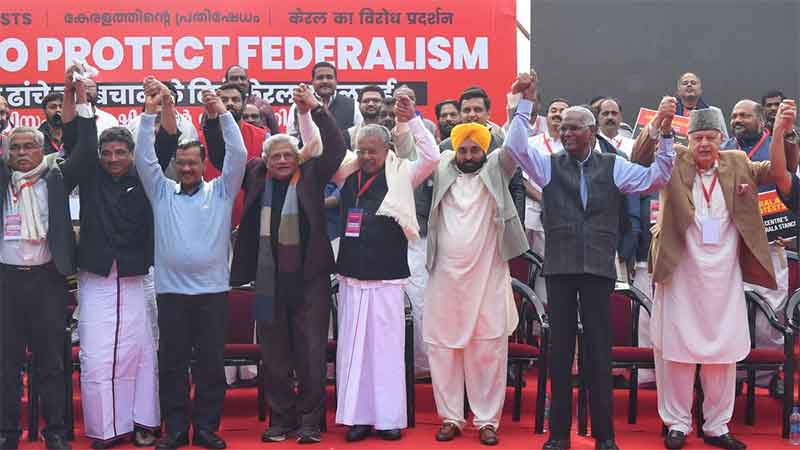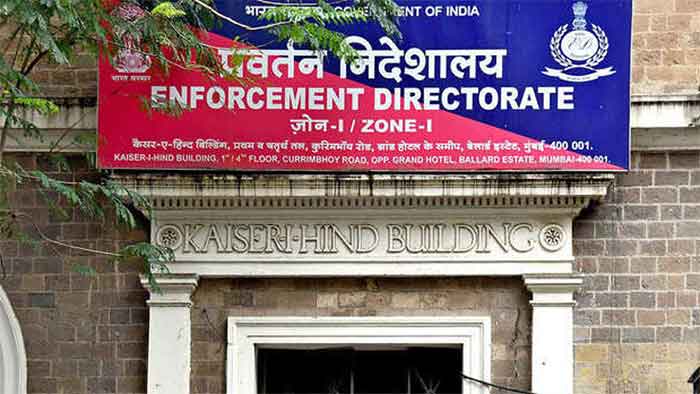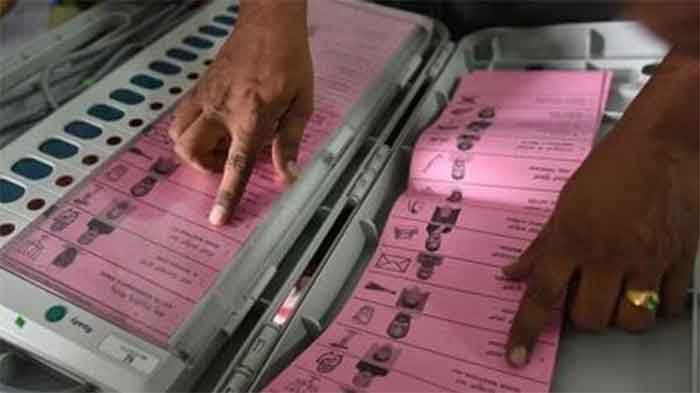
Letter to the Chief Ministers
Respected Chief Ministers,
Subject:- Increasing threat to federalism from Centrally Sponsored Schemes (CSSs)– Need to form a Federal Front of the States to persuade the Centre not to proliferate CSSs, instead transfer existing CSSs with the associated fund allocations to the States
I invite your attention to my letter dated March 2, 2022 addressed to Shri M K Stalin, the Chief Minister of Tamil Nadu, with copies marked to the other State Chief Ministers, on the need to form a Federal Front of the States. A copy of that letter may be readily accessed from the following web link.
This is a part of a series of letters I have written to the State Chief Ministers on the need to set up a common platform for the States to come together and discuss issues relevant to federalism.
In particular, in recent times, there has been a steep increase in budgetary allocations earmarked for the CSSs and other schemes covered under Article 282 of the Constitution.
While the allocations made under Articles 270 and 275 are strictly as per the pattern determined by the Finance Commission (FC) in consultation with the States, the allocations made under Article 282 are beyond the FC’s scope. The latter is the provision that has enabled the successive governments at the Centre to formulate many CSSs, several of them intruding into areas that legitimately belong to the States.
While such CSSs that facilitate transfer of indigenous know-how and technological inputs needed for capacity building, which lie outside the domain of the States, are necessary, the Centre should, as envisaged in the Constitution, view the provision in Article 282 more as an exception rather than a rule and use it selectively.
The erstwhile Planning Commission (PC), which the present government discontinued in 2015, adopted a formula (adjusted Gadgil formula) for inter se allocation of Plan funds among the States. As far as the CSSs were concerned, the PC was in close touch with the States, took their concerns against proliferation of the CSSs into account and tried to reduce their number and rationalise them, though without any significant reduction either in the number of schemes or in the amounts transferred through them. This is largely attributable to the Centre’s reluctance to reduce its domain of authority.
The dominance of the CSSs as a vehicle for transferring funds to the States has increased rapidly over the last eight years. In many sectors important from the point of view of the States, the present government at the Centre has introduced CSSs which could distort the States’ priorities, diminish their role and weaken them politically.
In 2014-15, the CSS fund releases under Article 282 constituted only 7.5% of the gross fund transfers to the States in that year. In contrast, in the Budget estimates for 2022-23, the corresponding proportion is around 47%. If this trend is to continue, the day is not far off when discretionary grants from the Centre to the States will eclipse rule-based transfers, eroding the role of the FC. If this happens, very little political space will remain for the States, with the governance system becoming more unitary than federal.
The 15th Finance Commission has referred to resource-expenditure asymmetry between the Union and the States. While the shares of the Union and the States in resources are around 63% and 37% respectively, the corresponding shares in expenditure are around 38% and 62%. There is a need to correct this asymmetry by increasing the States’ share in resources, a concern that is addressed by the successive Finance Commissions (FCs).
As already pointed out, the CSS-related funds provided by the Centre to the States under Article 282, from out of the Union’s tax revenues, are over and above the rule-based allocations made under Articles 270 and 275, in line with the pattern recommended by the FC. To that extent, though they may imply an additionality to the resources of the States, since they do not allow any flexibility to the States to adapt them to suit their requirements, they are often out of tune with the State’s own priorities. Since they come with the pre-condition that the States should also provide funds to meet their share of expenditure to qualify for each scheme, the States are forced to earmark their own resources, distorting their own budgetary priorities. The FC allocates the States’ share in the Union’s tax resources in accordance with a formula that takes into account various factors such as their respective needs, inter se equity considerations and relative indices of performance, whereas the pattern of allocation of CSS-related funds among the States neither conforms to those norms nor it leaves any flexibility to the States to align the schemes in tune with their own needs and priorities.
It is against this background, the Fifteenth Finance Commission (FFC) has observed, “Centrally sponsored schemes (CSS) co-financed by the Government of India should be flexible enough to allow States to adapt and innovate. Top-down mandates and strictures on programme implementation are the antithesis of an open-source model”
On the other hand, the different Central Ministries releasing CSS funds have been insisting on “branding” the schemes with Central logos, as if the funds “belong” to the Centre. Such branding of a scheme with a Central logo, giving credit to the Centre, runs against the grain of cooperative federalism.
To cite one specific example, the guidelines issued on the CSSs and other non-FC special assistance from time to time since 2017 by the Union Ministry of Finance make it difficult for the States to innovate and adapt them to suit their requirements. Those guidelines insist on the States to propagate the all-India character of the schemes, “branded” appropriately, with the credit given exclusively to the Central leadership, a fact that betrays the intentions underlying those schemes. The CSSs have thus become a convenient instrument for the political leadership at the Centre to use public resources for gaining private political advantage, a prospect that the framers of the Constitution would never have visualised, when they inserted Article 282.
The recent unsavoury wrangle between a Central Minister and the Telangana leadership on whose picture should be displayed at a remotely located PDS ration shop in the State (https://www.thenewsminute.com/article/fm-nirmala-question-missing-pm-photo-telangana-ration-ship-trs-min-hits-back-167478) makes a mockery of the idea of co-partnership that is the hallmark of federalism, as explained by Dr B R Ambedkar in his historic address to the Constituent Assembly when he presented the draft of the Constitution on November 25, 1949,
Cooperative federalism is a concept based on complementarity and mutual respect between the Union and the States, not on an adversarial relationship.
On the intent underlying Article 282 as perceived by the framers of the Constitution and its potential danger to States’ identity, I have attempted an article, a copy of which I have attached here (http://eassarma.in/sites/default/files/public/CSSs-a-threat-to-Federalism.pdf). In that article, I have tried to raise the following aspects.
- The apex court has held in Bhim Singh vs Union of India that the discretion (“public purpose”) provided to the Union under Article 282 is absolute and unfettered.
- To understand Article 282 better, I have reviewed the Constituent Assembly discussions and found a clarification given by Dr Ambedkar on the “co-partnership” relationship between the Union and the States, in his address to the Constituent Assembly, while presenting the Constitution, as already referred. I juxtaposed that clarification on the apex court’s finding in Kesavananda Bharati case, to arrive at the conclusion that federalism is a part of the fundamental character of the Constitution, which cannot be altered. Therefore, an unbridled use of that Article is not in line with the Constitution. In other words, the use of Article 282 cannot be open-ended. It needs to be used selectively. This is a contestable case the States could take up. There is a reasonable chance of it going through but the State’s legal counsel should study this in depth and strengthen the arguments.
- Apart from the legal recourse, it is the need of the hour for the States to come together on a common platform, take up all issues of federalism, including Article 282 and press the Centre to respect the spirit of federalism and ensure that the Union and the States work in harmony towards achieving the common good of the people, without each trying to gain political mileage at the cost of the other. The strength of the Union lies in the collective strength of the States.
I feel that the threat hiding in Article 282 can become a reality soon, which does not augur well for the future of the nation, unless the States collectively neutralise that threat and restore their legitimate space as provided in the Constitution.
I request you to consider the line of action proposed by me and act in time to safeguard federalism.
Regards,
Yours sincerely,
E A S Sarma
Former Secretary to Government of India
Visakhapatnam
















































